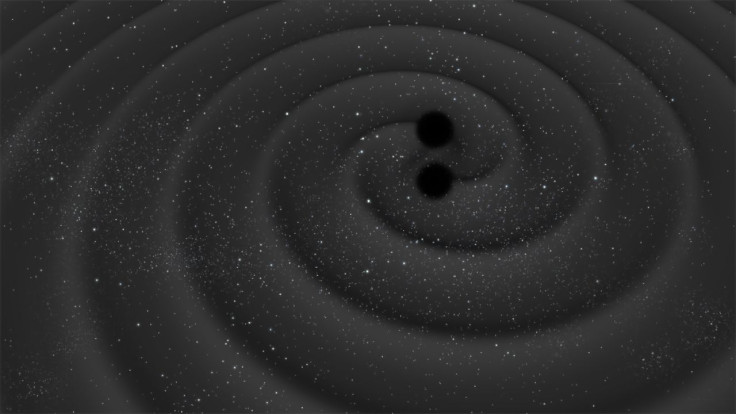Detecting Gravitational Waves From Space Using LISA Satellites Chosen As ESA’s Third Large-Class Mission

Albert Einstein predicted the existence of gravitational waves a century ago, in his General Theory of Relativity, but these ripples in the fabric of spacetime were detected for the first time by humans only in September 2015. They have been detected only twice more since, and the European Space Agency (ESA) wants to find more such instances.
In a meeting of ESA’s Science Programme Committee held Tuesday, a decision was reached to make the detection of gravitational waves from space the third large-class mission in the space agency’s Science program. To do that, ESA will use a trio of LISA satellites that will orbit Earth in a triangular formation.
Gravitational waves are caused by objects and events with extremely strong gravity, such as that produced by the merger of two black holes. Exactly such an event 1.3 billion light-years away triggered the waves that were detected by the Laser Interferometer Gravitational-Wave Observatory, using two detection devices separated by about 2,000 miles between Livingston, Louisiana and Hanford, Washington. Since that event recorded in 2015, LIGO has detected gravitational waves two more times, the latest of which was announced June 1.
Read: Gravitational Waves Kicked Supermassive Black Hole Out Of Galactic Core

The design of LISA, or the Laser Interferometer Space Antenna, has three satellites, separated by 2.5 million kilometers (1.55 million miles), in the shape of a triangle. The ongoing LISA Pathfinder mission, which ends June 30, has “successfully demonstrated the technology to build ESA's future space observatory of gravitational waves.”
A statement on the ESA website explained that the demonstrated technology “includes free-falling test masses linked by laser and isolated from all external and internal forces except gravity, a requirement to measure any possible distortion caused by a passing gravitational wave. The distortion affects the fabric of spacetime on the minuscule scale of a few millionths of a millionth of a metre over a distance of a million kilometres and so must be measured extremely precisely.”
There will be a total of six test masses, two on each spacecraft. Located at the ends of the arms of each satellite, the masses will be connected by lasers. The exact design for LISA and its cost will now be worked on, given the acceptance of the mission. Once ready, the proposal will be put forth for adoption before actual construction can begin. LISA is planned for a 2034 launch.
Read: China’s X-ray Telescope Will Study Black Holes, Gravitational Waves
Gravitational waves are important to study because they offer an entirely different way of looking at the universe, compared to electromagnetic radiation that has been observed by scientists till now. Events like collisions between black holes don’t emit little or no electromagnetic radiation, but are massive sources of gravitational waves. These waves also offer a unique perspective of the universe, because they interact very weakly with matter and therefore carry information across the cosmos that is free of distortion caused by objects in their paths.

During the Tuesday meeting, ESA also included another mission to its Science program, one that will hunt for exoplanets. Called Planetary Transits and Oscillations of Stars, or Plato, the mission was first selected in February 2014, and following its inclusion in the program, it will soon start construction.
It is scheduled to be launched in 2026, and from its vantage point in the sky, “Plato will monitor thousands of bright stars over a large area of the sky, searching for tiny, regular dips in brightness as their planets cross in front of them, temporarily blocking out a small fraction of the starlight,” the statement said.
© Copyright IBTimes 2024. All rights reserved.





















